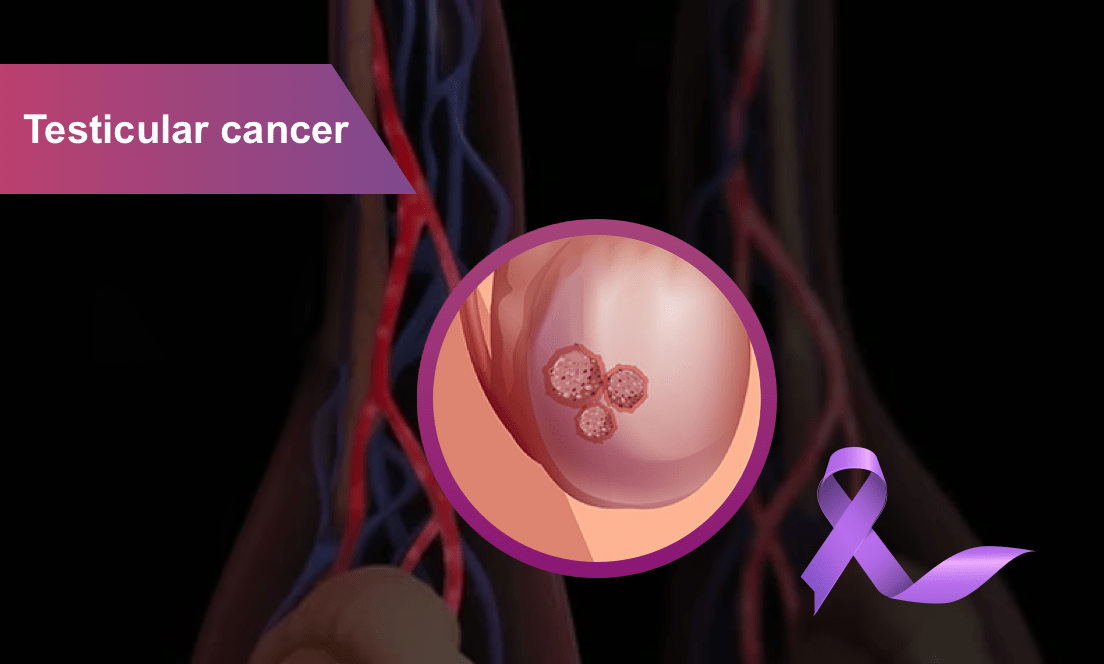Search:
Categories
Archives
Testicular cancer
- CURIA
- Mai, 24, 2022
- Informed Patient
- Commentaires fermés sur Testicular cancer

Testicular cancer is the cancer of the testes, located inside the scrotum, a loose bag of skin under the penis. Although testicular cancer is rare it is known to commonly occur in American males between the ages of 15 and 35. The good news is that testicular cancer can be treated even if it has spread beyond the testicle. The treatment depends on the type and stage of cancer.1
Symptoms
In testicular cancer, usually cancer affects only one testicle.
Symptoms to watch out for are:
- A lump or enlargement in testicle
- Feeling of heaviness in scrotum
- A dull ache in the abdomen or groin
- Sudden collection of fluid in the scrotum
- Pain or discomfort in a testicle or scrotum
- Back pain
If these symptoms last for two weeks it is time to consult a doctor.
Causes
It is not known what causes testicular cancer, but it starts when healthy cells in a testicle develop abnormally. When the growth of these cells gets out of control they form a mass in the testicle. It is believed that a majority of testicular cancers begin in the germ cells which produce immature sperm.
Risk Factors
Family history – Having a family history of testicular cancer increases the risk of developing this cancer.
Age – Although testicular cancer can occur at any age, it usually occurs in teenagers and young men in the age group of 15 to 35.
Race – The occurrence of testicular cancer is more common in white men than in black men.
Abnormal Testicle Development – Conditions such as Klinefelter syndrome which cause testicles to develop abnormally may be a risk factor.
An undescended testicle – In this condition one testis doesn’t move from the abdominal area into the scrotum before birth. These men are at risk even if the undescended testicle is surgically relocated to the scrotum.
Treatment
The treatment for testicular cancer varies from person to person and depends on the diagnosis and health of the patient.
The treatment options are:
Surveillance – It is recommended for the initial stages of cancer like Stage 0 and 1. Includes a physical exam, tumour marker tests and imaging tests, which starts with an ultrasound of the scrotum and also involve chest x-rays or CT scans.
Surgery – There are different types of surgery depending on the cancer. Orchiectomy removes the entire testicle and mass through a small cut in the groin. Here the spermatic cord is also removed. Testis-sparing surgery is recommended in selected cases where just the tumour tissue is removed and not the entire testis. This usually happens in the case of benign tumours. Retroperitoneal lymph node dissection is a complex surgery used to restrict the side effects of removing the lymph nodes in the back of the abdomen.
Radiation – It is used to kill cancer cells on the testis or nearby lymph nodes.
Chemotherapy – If a cancer has spread beyond the testicles or tumour markers rise after surgery, chemotherapy is used.
Follow up Care
It can take up to two weeks or a month to recover from a surgery like orchiectomy. It is important not to lift anything heavy or even have sex until completely healed. Also, one should not exercise, run or engage in any sport until four weeks after surgery2.
Testicular cancer is one of the most common forms of cancer but has the highest survival rates if found and treated early3. So be aware of its symptoms and go for screening even with the slightest doubt.
Références :
